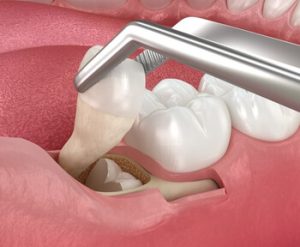Most dental patients hope that a root canal treatment will solve their problem for good. But in some cases, removing a root canal tooth becomes the only viable option to protect your oral health. Whether due to reinfection, fracture, or failure to heal, extraction of a root canal-treated tooth is sometimes unavoidable, and understanding the process can help you make informed decisions. In this guide, we’ll explore when removing root canal tooth is needed, how the procedure works, what happens after your root canal-treated tooth is extracted, and what tooth replacement options are available.
When Does a Root Canal Tooth Need to Be Removed?
A root canal procedure is meant to clean out infected pulp and seal the inner chamber with root canal filling material. Ideally, this prevents further infection and saves the affected tooth. However, despite best efforts, root canal infections can sometimes recur due to:
- Missed canals or complex root anatomy
- Fractured roots or new decay
- Incomplete healing of the surrounding bone and gum tissue
- A leaking crown or restoration
If you continue to experience severe pain, swelling, or sensitivity in a treated tooth, your dentist may determine that further treatment won’t resolve the issue, and tooth extraction may be the best course.
Signs That You May Need a Tooth Removed
- Persistent or recurring pain
- Swelling around the gum tissue
- Visible fracture lines in the crown or root
- Sinus tracts or pus drainage
- Radiographic signs of bone loss
If any of these symptoms are present in your root canal-treated teeth, your dentist will assess the situation through clinical examination and X-rays.
How the Tooth Extraction Procedure Works
If extraction is recommended, the process is typically straightforward. Your dentist will:
- Apply local anaesthesia to numb the area
- Gently loosen and remove the canal tooth, ensuring all damaged or infected tissue is carefully removed
- Clean and disinfect the extraction site
- Possibly apply platelet-rich fibrin (PRF) to assist the recovery of the nearby gum tissue and bone
In more complex cases, such as when dealing with upper teeth or curved roots, surgical extraction may be required. But thanks to modern dentistry, these procedures are minimally invasive and predictable.
Can Root Canal Retreatment Always Be Avoided?
Not necessarily. While removing a root canal tooth may seem final, many root canal procedures can still be revised or corrected through further treatment. A dentist will first evaluate whether the issue lies in a missed canal, leaking root canal filling material, or recontamination due to a failed crown. If the damaged or infected tooth remains structurally intact, retreatment or apicoectomy may offer a second chance to save the treated tooth.
However, retreatment isn’t always the best course. If the root canal tooth is severely damaged, fractured, or has compromised bone and gum tissue, continuing efforts may only delay the inevitable, and prolong pain, infection, or stress on your immune system.
This is especially important for patients with systemic diseases, autoimmune conditions, or other serious health concerns. In such cases, dentists may recommend root canal removal early to minimise microbial load and protect the body’s wider well-being. Bacteria from root canal infections have been studied for potential links to heart disease, chronic fatigue, and inflammatory conditions, especially in patients already managing complex health conditions.
Removing a chronically infected tooth, followed by restoration using dental implants, partial dentures, or zirconia implants, may offer long-term relief and stability, without potentially affecting the rest of the mouth or compromising overall health.
At a reputable dental clinic, your care plan will be tailored based on your tooth’s condition, risk factors, and future goals, ensuring both your oral health and whole-body balance are supported.
Risks of Leaving an Infected Tooth Untreated
- Systemic diseases like heart disease or diabetes
- Increased health concerns for those with autoimmune conditions
- Spread of infection to the nearby adjacent teeth
For this reason, removing a root canal tooth that has failed is often the most responsible decision for your overall oral health and well-being.
Tooth Replacement Options After Extraction
Once the extracted tooth is removed, you’ll want to consider a replacement to avoid problems such as:
- Shifting of adjacent teeth
- Bite misalignment
- Jawbone shrinkage at the extraction site
- Functional or aesthetic concerns from a missing tooth
Dental Implant
The gold standard is that a dental implant replaces both the tooth and root, preserving bone and function. Some patients may prefer zirconia implants for biocompatibility, depending on their personal or health-based preferences.
Partial Dentures
A partial denture or removable prosthesis is a more budget-friendly alternative, replacing one or more infected teeth. This option is often temporary but effective.
Fixed Bridge
A fixed bridge uses surrounding teeth as anchors. While stable, it requires altering adjacent teeth, which may not be ideal for everyone.
Aftercare: Healing and Diet Tips
- Stick to soft foods like mashed vegetables, soup, or yoghurt for the first 48–72 hours
- Avoid hard, spicy, or crunchy foods that may irritate the damaged tissue
- Rinse gently with warm saline water to soothe swelling and reduce the risk of infection
- Avoid smoking, drinking through straws, or touching the extraction site
- Use ice packs to manage swelling and take pain relievers as directed
Your dentist may also schedule a follow-up to check for signs of further decay, ensure proper clot formation, and discuss dental implants or permanent solutions.
When Retreatment Is Still Possible
Before opting for extraction, your dentist may explore root canal retreatment. This’s best suited when:
- The original root canal was performed recently
- The structure of the tooth is still intact
- There’s no evidence of a vertical fracture or extensive bone loss
Ultimately, your dentist will assess whether attempting further treatment would be beneficial or whether the tooth is too severely damaged.
Final Thoughts: Making the Best Decision for Your Health
While root canal treatments often succeed, failure can and does happen. In such cases, removing a root canal tooth is sometimes the only way to restore comfort, eliminate infection, and protect your overall health.
If you’re concerned about a previously treated tooth or want long-term solutions that support your oral and overall health, book a consultation with us at Available Dental Care or call (02) 4601 3828. Our team can guide you through your options and help determine whether preserving or removing a root canal tooth is the right next step.
Note: Any surgical or invasive procedure carries risks. Before proceeding, you should seek a second opinion from an appropriately qualified health practitioner.
Resources
Stang, D. (2018). ‘Root Canal’. Healthline, 25 May. San Francisco, CA: Healthline Media.
https://www.healthline.com/health/root-canal
Colgate Oral Care Team. (n.d.). ‘What is a Dental Implant?’. Colgate. New York, NY: Colgate-Palmolive Company.
https://www.colgate.com/en-us/oral-health/implants/what-are-dental-implants
WebMD Editorial Contributor. (2023). ‘What to Know About Tooth Decay Stages’. WebMD, 6 September. New York, NY: WebMD LLC.
https://www.webmd.com/oral-health/what-to-know-tooth-decay-stages









